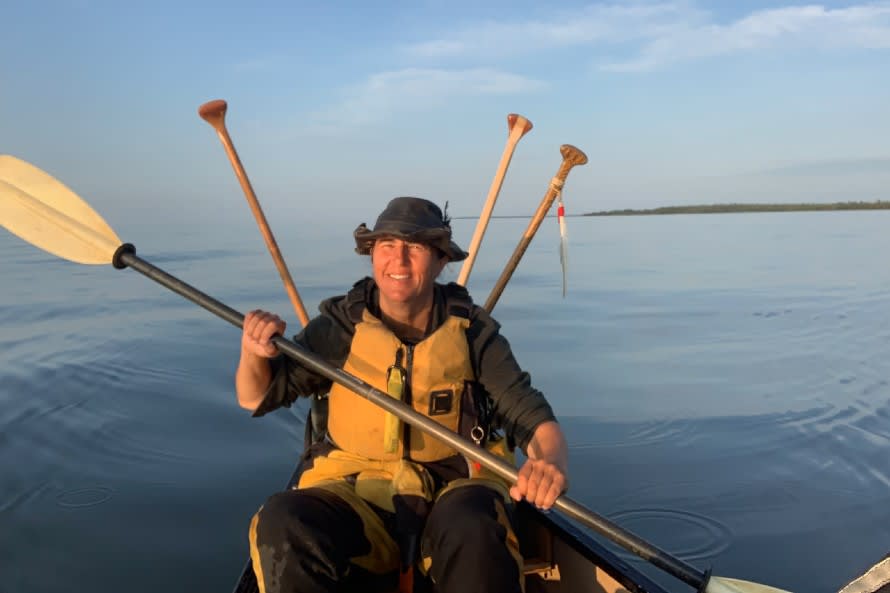An idea as ambitious as it is personal, 500 Days in the Wild traces Dianne Whelan's trek across Canada via the Trans Canada Trail. Starting on an "ancient rock called Newfoundland," the BC-based Whelan sets her compass westward, following the sun back home across all 24,000 km of the country. What makes this story especially intriguing is Whelan’s mode of travel: she sets out to traverse these landscapes without motors, moving only by ski, snowshoe, bike, hike or canoe. While the physical feat is impressive, it's the spiritual connection with the land, its history and the people that really captivates.
The documentary captures impressive visuals that range from intimate lo-fi footage to breathtaking drone shots, creating both a sweeping portrait of Canada's diverse beauty and an introspective insight into its people. Whelan, an award-winning cinematographer, uses her skills to showcase the country's beauty, ensuring that the visual storytelling is as compelling as the journey itself. The film also features Canadiana music by artists like the Tragically Hip. The stunning shots combined with the iconic music create a truly Canadian experience.
At over two hours, the sprawling narrative, although ambitious, consistently meanders, feeling aimless at moments when a tighter edit could have helped focus the narrative. While sometimes harrowing, it’s hard to defend lengthy scenes involving canoes getting caught in rip tides and pushing sleds in the snow 10 feet at a time. Maybe it will be a part of the charm for some, but Whelan's lack of preparation can feel frustrating. The documentary could have benefited from a more disciplined approach to editing — although the sometimes exhausting viewing experience makes us feel like we are a part of the process. Despite these pacing issues, Whelan is clearly up to the task of capturing Canada's identity, both good and bad.
500 Days in the Wild takes every chance to meet a variety of Canadians — from Indigenous teachers and protesters to neighbourly folks just looking to help out. This approach, though at times detracting from the scope of the story, highlights the kindness and support of Canadians. Their assistance not only adds a layer of human interest but also underscores the film's message of travelling with respect and appreciation for the diverse cultures and communities across Canada. This assistance also becomes integral to the story, as these meetings and lessons become pivotal to the film's success.
The most interesting aspect of the narrative is the constant acknowledgement of the diverse Indigenous territories Whelan passes through. Offering a thoughtful context to the film, the director creates a deeper understanding and appreciation of Canada's complex history, as well as giving audiences the rare chance to see these lands one after the other on the ground level. Land acknowledgements can feel abstract at times; this documentary allows us to truly understand them.
Although it could have benefited from a tighter edit, 500 Days in the Wild remains a remarkable endeavour. From serene vistas to encounters with wildlife, starkly contrasted with the hustle and bustle of city life, Whelan perfectly showcases this great country. For Canadian viewers, there's an inherent excitement in seeing Whelan approach one's hometown, bringing the journey closer to home and making the narrative even more relatable.
This film isn't simply a journey across Canada; it's an exploration of what it means to connect deeply with land and people, told by someone who has experienced it in a way few ever will. 500 Days in the Wild offers a journey that many dream of but few will ever undertake.
